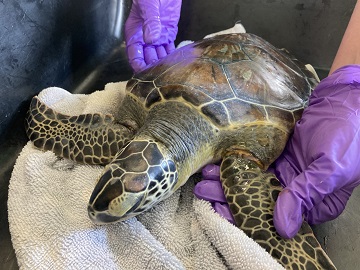640622-sweet treatment.jpeg

An injured sea turtle has had honey applied to a wound to promote healing. Credit: Andrew Orgill
The groups that rescue and treat sick or injured sea turtles take advantage of a lot of modern science: the latest medications, CAT scans, laser surgery, and much more. But some of those groups also use one of the most ancient treatments of all: honey. Some even keep their own beehives to maintain a fresh supply.
Honey has been used as a treatment for people for thousands of years. It’s been applied to cuts and scrapes, burns, and other wounds. And both ancient accounts and modern research tell us that it can help heal a variety of injuries.
It does so in several ways. For starters, it can kill bacteria. In fact, jars of honey found in ancient Egyptian tombs were still edible—they hadn’t spoiled at all. In part, that’s because honey is acidic, so not much can live inside it. And when it comes in contact with a wound, it creates a mild form of hydrogen peroxide, which helps clean the wound.
Research has shown that honey also helps reduce inflammation, speeds up the removal of dead skin, and forms an air-tight barrier that protects a wound. And honeycomb can be molded to fit oddly shaped wounds, adding more protection.
There are some caveats. The honey has to be fresh and unprocessed—heat can destroy some of its healing properties. And it’s most effective when combined with other therapies. But it’s proven so successful that it’s routinely used at sea turtle rescue centers in Texas, Florida, Georgia, and elsewhere—a sweet treatment for injured creatures.

